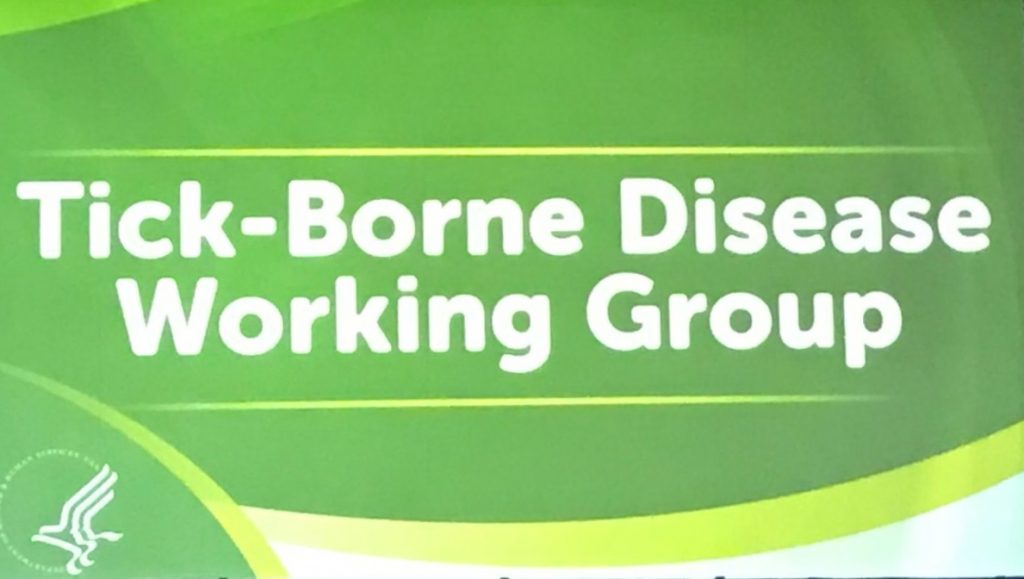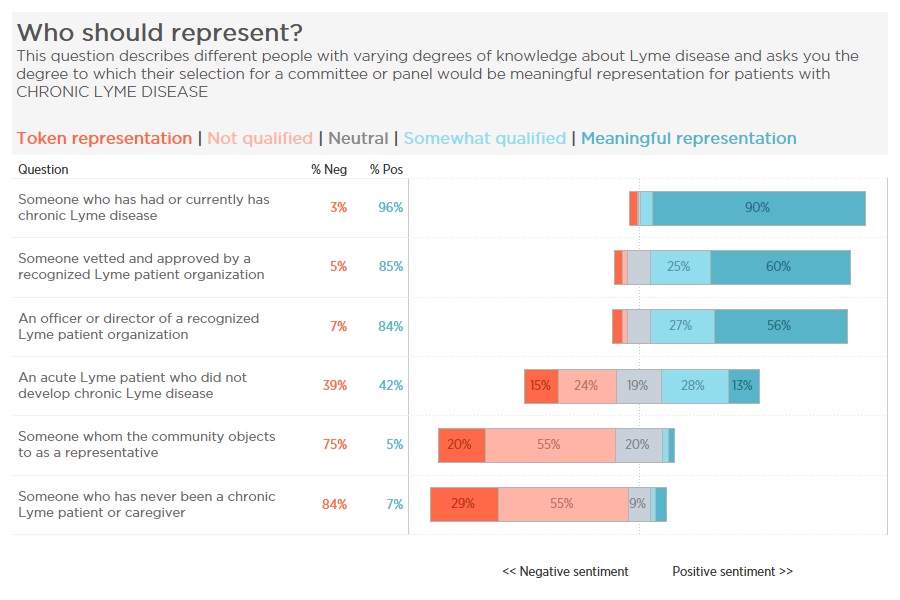LYMEPOLICYWONK: Who represents Lyme disease patients? Why it matters.

Since December, the Lyme community has been waiting to learn who will be appointed as new members of the federal Tick-Borne Disease Working Group.
You may recall, the 14-member panel was first formed in 2017, in accordance with the provisions of the 21st Century Cures Act. The idea was to bring together government officials, assorted experts, and representatives of the patient community—so that a variety of viewpoints could be discussed. Their goal was to help set the course for government action regarding Lyme and other tick-borne diseases.
The group met a number of times in 2017 and 2018, and issued its first report to Congress at the end of 2018.
Now, the Working Group is set to be re-constituted, with another report to Congress due in 2020.
As we wait for the new panelists to be announced, we have many questions about who will be chosen to represent the Lyme community. Such as:
Will the interests of the Lyme community be effectively represented on the Working Group?
If patient interests are not sufficiently represented on the Working Group, then its processes will lack credibility and may harm the Lyme disease patient community.
- How many patient representatives are appointed to the Working Group? There are seven public members on the Working Group under the legislative mandate. The last Working Group’s public members included three patient representatives: Wendy Adams of Bay Area Lyme Foundation, Pat Smith of the Lyme Disease Association, and Karen Vanderhoof-Forshner of the Lyme Disease Foundation. (Vanderhoof-Forshner was subsequently replaced by Robert Sabatino, of the New York-based Lyme Society, Inc.) How many patient reps will there be on this Working Group? Patients can have a hard time holding their own in a group of researchers. To a certain extent, effective representation is a numbers game. How outnumbered are the patients? Who is protecting their ability to have an influence?
- Who can effectively represent patient interests? In a survey last year, we asked members of the Lyme disease community what they saw as the difference between a “token” patient and someone who could meaningfully represent patients with chronic Lyme disease. The chart below shows the results of that survey.
- To be a meaningful representative, patients chosen for a panel should: a) have or be a caregiver to a patient with chronic Lyme disease and b) should be an officer or director or someone vetted and approved by a recognized and trusted patient advocacy group (PAG) or someone approved by a PAG. The latter ensures that they are someone recognized in the community as representing the interests of those with chronic Lyme disease. PAGs are unlikely to give their stamp of approval to someone who lacks the knowledge and ability to hold their own among a group of researchers. Sometimes government panels like to select patients who are docile and easily managed. These patients cannot effectively represent the interests of patients with chronic Lyme disease.
- People who are automatically considered tokens: include those who are not a chronic Lyme patient or caregivers or those to whom the community objects. A patient who has only had acute Lyme disease also did not make the grade for most respondents.
Do participants on the Working Group represent industry interests?
Another question the Lyme disease community should ask is whether people on the panel represent industry interests. For example, Dr. Robert Smith who sat on the previous TBDWG, has worked for the vaccine industry. Whose interests does he serve when he sits on the TBDWG? His own? Or those of an industry likely to fund his work? You might recall that when the last panel was announced, we vociferously objected to Dr. Gary Wormser because of his extensive financial conflicts of interest, especially related to Lyme disease diagnostic testing. (Wormser subsequently “declined the invitation” to participate in the Working Group. He was replaced by the aforementioned Dr. Smith.)
Is the legislative purpose of this panel reflected in the new Working Group? The TBDWG was included in the 21st Century Cures legislation at the request of patients with chronic Lyme disease. The purpose of the Working Group is to advance the interests of patients with chronic Lyme disease and to include their voices in the discussion of what research to prioritize. Although the group has the words “tick-borne disease” in its title, and many patients with chronic Lyme disease have co-infections from another tick-borne pathogen, the bill was passed to address the interests of patients with chronic Lyme disease. So, a meaningful question is whether the panel members’ primary focus of interest is in fact Lyme disease. If it is another tick-borne disease, while their information may be generally useful, it will not further the interest of the legislative intent regarding Lyme disease. The interests of researchers in other tick-borne diseases should not usurp or replace those of Lyme disease.
Lorraine Johnson, JD, MBA, is the Chief Executive Officer of LymeDisease.org. You can contact her at lbjohnson@lymedisease.org. On Twitter, follow her @lymepolicywonk.





















We invite you to comment on our Facebook page.
Visit LymeDisease.org Facebook Page